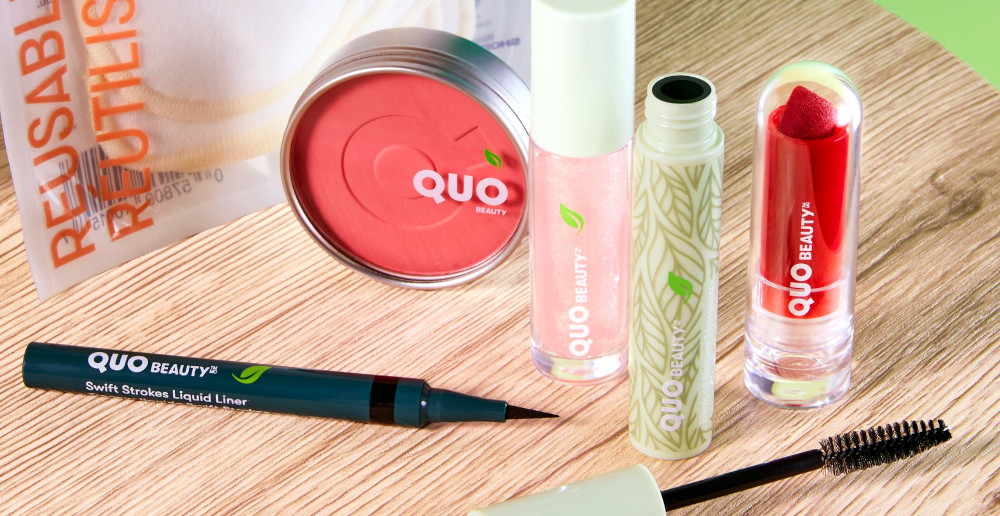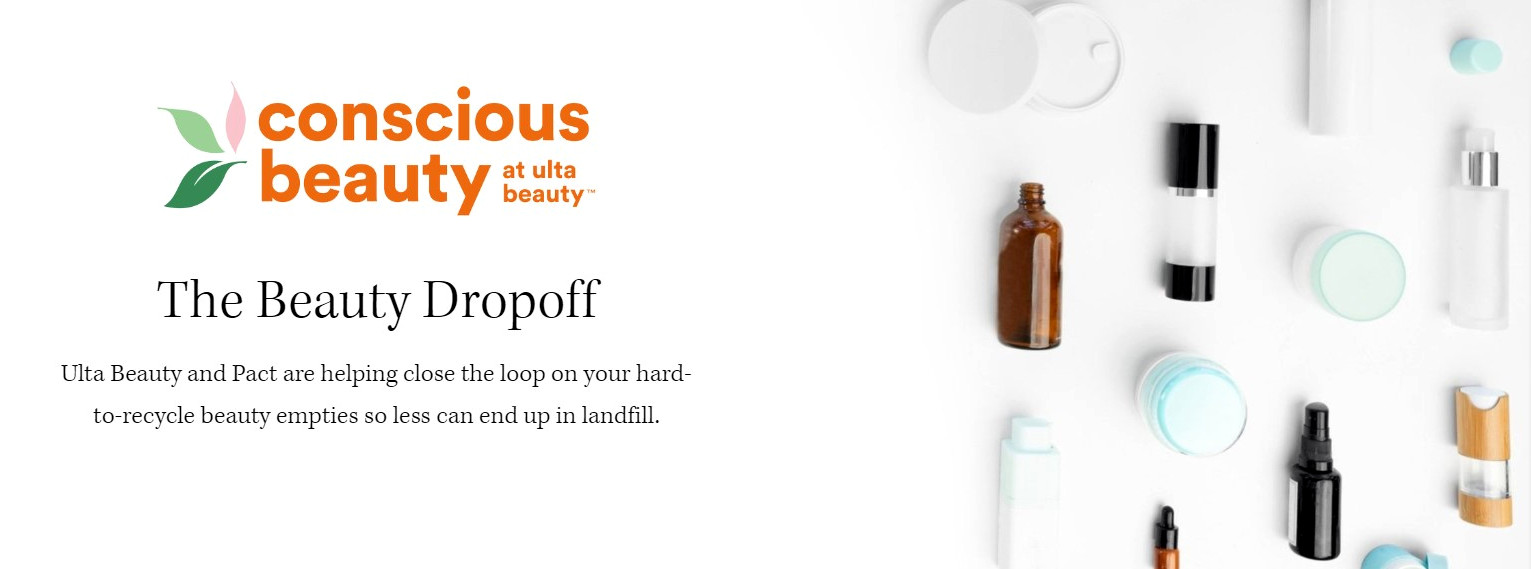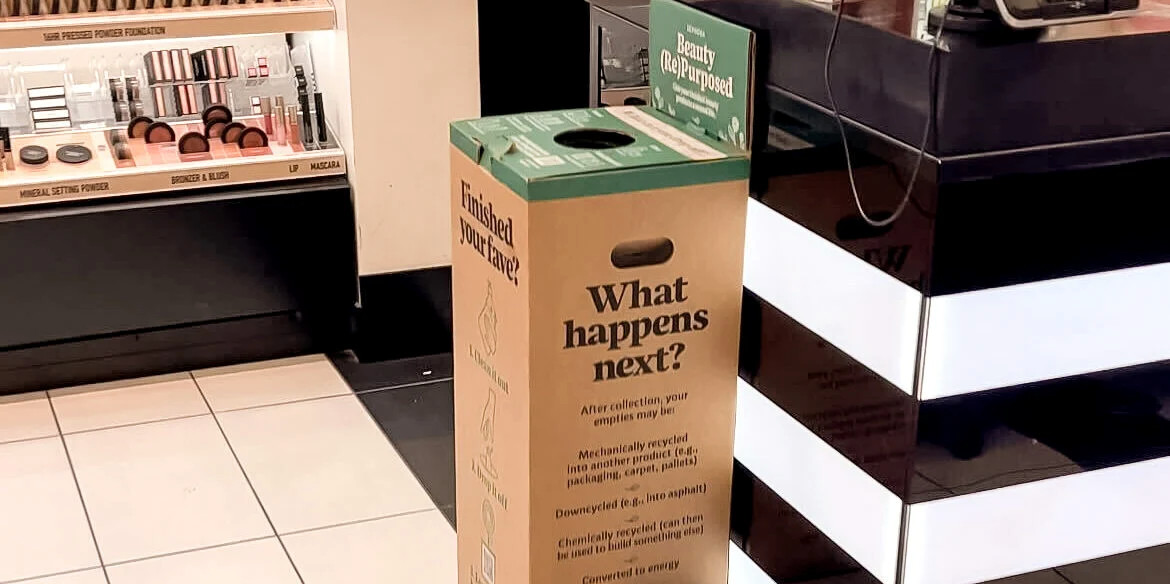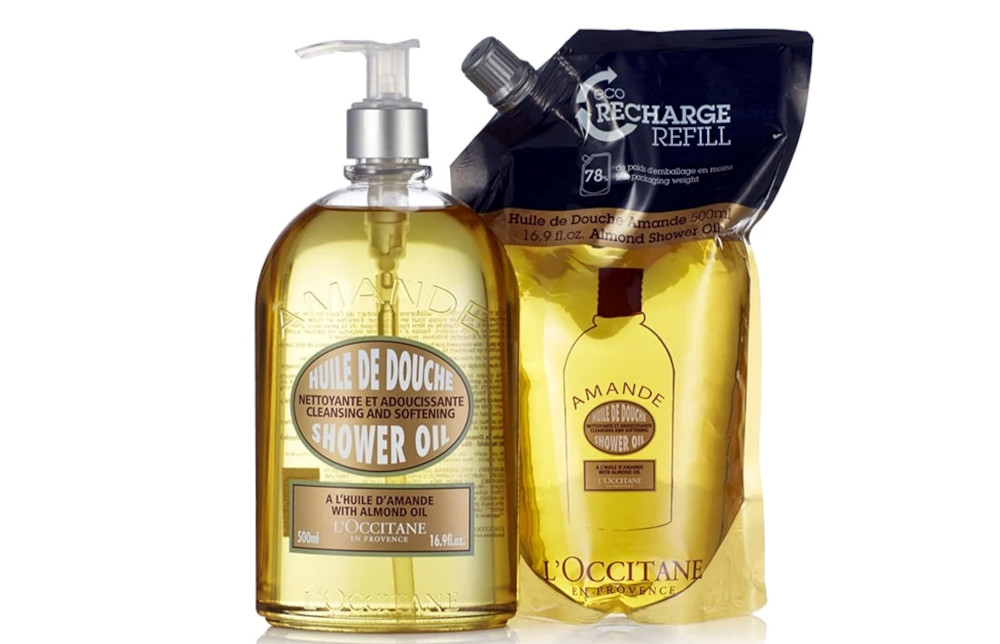More Beauty Retailers Embracing a Circular Economy for Packaging
8 min read
New initiatives from Kiehl’s, Sephora, Shoppers Drug Mart and Ulta lay further groundwork for reducing the beauty industry’s massive plastic footprint.
With an estimated 95
percent of
cosmetic and personal-care packaging ending up in landfills and waterways,
packaging waste — most of which isn’t accepted in curbside recycling programs —
is one of the biggest sustainability challenges facing the beauty industry.
According to
Forbes,
94 percent of US consumers support recycling and 74 percent believe it should be
a priority; however, only 35 percent say they actually recycle due to confusion
and lack of convenient options. Well, a growing number of beauty retailers are
now offering solutions to that.
Kiehl’s & Benjamin Von Wong’s ‘Single-Use Reflections’ highlights need for circular packaging solutions
Image credit: Benjamin Von
Wong
Kiehl’s Since 1851 has partnered with renowned artist &
activist Benjamin Von Wong on “Single-Use
Reflections” — a sculptural installation on New York City’s High
Line that invites viewers to pause and reflect on
how both widespread systemic change and small individual lifestyle shifts can
positively impact our planet’s future.
The sculpture consists of large-scale mirrors featuring thought-provoking
prompts that protrude from the mountain of empty plastic containers and provide
unique photo touchpoints. Hidden within the installation is a keyhole where
viewers can peek into a miniature world, inspired by an old-world apothecary —
highlighting potential ways to reduce plastic waste.
The role of art in climate, sustainability and regeneration discourse
Benjamin Von Wong’s activist artistry transcends mere visual appeal — underlining the essential role of art in climate, sustainability and regeneration discourse. Join us as he explores the incredible potential of art as cultural commentary in raising awareness, and taking our shared behavioral and cultural pursuits to the next level — Wed, May 8, at Brand-Led Culture Change.
With more than 400 million metric tons of
plastic discarded
annually around the world, “Single-Use Reflections” highlights the impact of
single-use plastic on the beauty of our planet while providing optimism for the
future.
“I am honored to be partnering with Kiehl’s to amplify their message around
circularity,” said Von Wong — whose issue-driven
art combines everyday objects with shocking
statistics to drive awareness and change around persistent sustainability issues
including ocean plastic, fast fashion and electronic
waste. “I was inspired by the Greek legend of
the Hydra, which grows back another head for each one that you cut off —
reminiscent of the single-use plastic waste problem. I am a firm believer of
progress over perfection. Through this sculpture, I hope to inspire people and
companies to join Kiehl’s in loudly championing single-use
alternatives.
I believe that if we can encourage greater refill use, then companies across
industries will have greater incentive to start supporting more refill solutions!”
For over 170 years, Kiehl’s has been committed to the health of skin, body and
hair and the wellbeing of the world. The company is committed to moving beyond
sustainability to
circularity —
pledging transparency about its journey while taking action and inspiring
others, both individuals and companies, to do the same.
As part of its Mission Renewal,
Kiehl’s is committed to making single-use plastic a thing of the past by
designing 100 percent of its products to be reused,
refilled or made of recycled
materials by 2030. So far, the company has collected 7 million empty products
through Recycle & Be Rewarded in
the US; and 33 percent of plastic Kiehl’s packaging come from post-consumer
recycled materials.
“Single-Use Reflections” will be on view through April 17 at the High Line
in New York City (visiting hours: 7am-10pm EST). To Access: Use the staircase at
the corner of 14th Street and 10th Avenue.
Following its display on the High Line, “Single-Use Reflections” will move to a
new location as an ongoing reminder to #DontRebuyJustRefill.
Shoppers Drug Mart launches Quo Beauty recycling program

Image credit: Shoppers Drug
Mart
Up in Canada, leading pharmacy retailer Shoppers Drug
Mart recently launched its free Quo Beauty
Cosmetics Free Recycling
Program, in partnership
with TerraCycle — which
enables mail-in recycling of empties from Shoppers’ private-label Quo Beauty
cosmetics brand.
For each pound of cosmetics waste shipped in through the recycling program, $1
will be donated to Shoppers Foundation for Women’s
Health™
— which works to create equitable and accessible care for all women in Canada.
“As we work to ensure all control-brand packaging is recyclable or reusable by
2025, we continue to look for new and innovative ways to eliminate the use of
single-us plastics for all product packaging,” says Pat
Dean, SVP of Category
Management at Shoppers Drug Mart. “We are proud to partner with TerraCycle as
the first major retailer to offer a recycling program for a private-label color
cosmetics line, offering more sustainable choices to Canadians and reducing our
impact on the planet.”
Customers can mail in their eligible empty Quo Beauty cosmetics components by
downloading a prepaid shipping label on the TerraCycle program
page.
Once collected, the cosmetic packaging is cleaned and separated by material
type, and then recycled into raw formats that manufacturers use to make new
products.
“The majority of cosmetic products are not accepted by curbside recycling
services due to their complex, multilayer packaging, which often includes small
components such as wands, pumps, and caps that slip through the sorting
machinery at recycling facilities,” said TerraCycle founder and CEO Tom
Szaky,. “As the first major retailer in
Canada to create a free recycling program for their own private-label beauty
brand, Shoppers Drug Mart is setting a great example for the beauty industry.”
Shoppers’ partnership with TerraCycle comes less than a year after the launch of
More Planet Love by Quo
Beauty,
which includes over 500 products in packaging that uses recycled plastics,
mono-materials and reduced plastic. The retailer aims to have all control-brand
packaging meet the Canada Plastics Pact’s Golden Design
Rules by 2025.
Ulta Beauty takes ‘Beauty Drop-Off’ chainwide

Image credit: Pact Collective
Meanwhile, Ulta Beauty has
expanded
its partnership with the nonprofit Pact
Collective — which is promoting greater
circularity in the beauty industry for both businesses and consumers by
providing a solution for hard-to-recycle beauty packaging. Ulta’s Beauty
Drop-Off in-store take-back
initiative, initially launched in 2023 in 90 stores, can now be found chainwide
at the over 1,350 Ulta stores in the US. The program aims to help consumers rid
themselves of the burden of recycling beauty SKUs correctly, providing bins
where shoppers can drop off empty packaging. Pact then facilitates recycling
through upcycling, downcycling, molecular recycling, and waste-to-energy
conversion.
“We hope that this collaboration will provide more education and accessibility
to beauty consumers,” Carly
Snider, Executive Director of Pact
Collective, told
BeautyMatter.
“The program highlights the importance of understanding where our packaging goes
when we are done using it while offering an end-of-life solution for those
trickier packages to recycle. The Beauty Drop-Off’s 1,350+ new locations for
consumers to properly dispose of their hard-to-recycle beauty empties has almost
doubled Pact’s drop-off bin locations overnight.”
By 2025, Ulta
aims for
50 percent of its product packaging to be recyclable, refillable or made from
biosourced materials by 2025.
Pact is also advancing circularity in the beauty industry through a
partnership with climate-tech startup
Bluebird
— which has yielded a turnkey solution to over 150 beauty and wellness brands
that allows them to quickly assess the recyclability of their current packaging,
and helping them learn what needs changing to keep their products as sustainable
as possible. Through the platform, brands can also effectively communicate
appropriate disposal and recycling guidelines to consumers through an intuitive
interactive e-commerce widget — which provides Pact drop-off bin locations and
reflects the most up-to-date recycling infrastructure.
Sephora expands recycling and refill options

Image credit: The New Knew
Pact’s Beauty Drop-Off program is also in place at 600
Sephora stores (under the name Beauty
(Re)Purposed), as well as with
dozens of other beauty brands and
retailers.
Sephora says Beauty (Re)Purposed has already collected more than 10,860
pounds of material — the equivalent of approximately 217,220 lipstick tubes
— since its
launch
in May 2023.
The beauty retailer also continues to add to its roster of refillable beauty
products, which now
features offerings from more than 45 brands — including Glow Recipe,
Fenty Beauty, Ouai, Maison Margiela and Josie Maran.
A cosmetics-packaging industry expert dishes on refillables

Image credit:
L’Occitane
Yet, with all this excitement about refillable packaging – is it in fact a
viable solution or are there issues that still need to be addressed? In a
recent interview in
Glossy,
an expert in cosmetics packaging shared her thoughts about the potential role of
— and challenges with — refillables in a sustainable packaging strategy:
Finding the right format
“Generally speaking, refills are not as sustainable as we’ve been led to
believe. One [category] is bottle-in-a-bottle refills, where the packaging has
an insert in the form of a refillable cartridge or pot that goes into a keepsake
component; those tend to be the least effective of the refills, in regard to
sustainability — a lot of times they can actually increase the amount of waste
and emissions, because you’re effectively producing two separate packages.
Consumers have to purchase the refill four to five times before they start to
see any sort of reduction in carbon emissions or waste.
“My preferred refill strategy right now would be refill pouches. They don’t work
for every product; but with refill pouches, there’s an automatic reduction in
material use. Depending on the pouch, sometimes you can see up to a 90 percent
reduction in plastic compared to a standard single-use component.”
Lack of infrastructure
“Looking into the future, a lot of beauty brands have explored the idea of doing
refill stations. I don’t think our infrastructure is ready for that. There are
some big hygiene concerns, understandably; and complexities that just haven’t
been worked out yet. But looking to the future, hopefully they will become more
feasible to implement.”
Consumer inconvenience
“I’ve helped launch refillable packaging for a number of brands; and based on
the conversations behind the scenes, refills still have
a very low adoption rate amongst consumers. There isn’t a significant enough
price incentive for consumers, and they’d rather just have a brand-new, full
component [than save a few dollars]. Consumers just aren’t as motivated to
purchase refills and use them.”
Forecasting success
“I’ve had brands want to launch refills for products that have never been on the
market before and they have no forecasting data; and I try to discourage them
from that, because they don’t know if this is going to be a highly repurchased
product.
“On the flip side, there are brands that have products that they know 50 percent
of their customers repurchase every 2 to 3 months; so, there’s the potential for
the refill system to be successful with their current customers’ repurchasing
habits. It is a tricky conversation because a lot of brands want to make a
splash with their sustainability implementation efforts — and right now, refills
tend to make a splash.”





